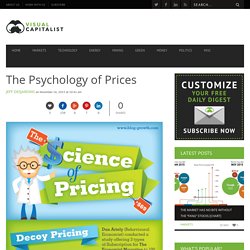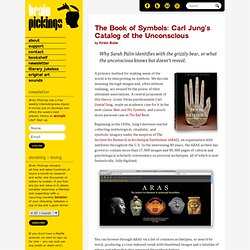

The Psychology of Prices. The fascinating infographic we share today focuses in on the psychology of pricing strategy.

In other words: do the actual pricing options provided to a consumer influence overall buying behavior? It turns out the answer to that is a “yes”, and studies show that the extent to which it is a factor in buying decisions is actually very significant. Aside from just being interesting information, we reckon that there is a parallel with finance and investing as well that may be worth a look. Investors, like customers, like to get value with what they buy. That’s why, ultimately, the option they choose is a reflection of the prices offered to them as well as the perceived value of each option.
This “perceived value” changes based on the options offered. What biases do investors or speculators have towards securities that are perceived to have “value” in a given instance? This is a question worth some self-reflection, because sometimes investors can be their own worst enemies. Related You vs. Remote UX Research – Choosing a Remote User Experience Research Tool. Startup Marketing And How Emotion Drives Customer Action. Editor’s note: Kobie Fuller is a principal at Accel Partners.

Put down the calculator and ignore the data for a second. Contrary to popular belief, startup marketing is not all about quantitative metrics and growth hacking. It’s time to start mapping out what creates a connection between you and your customer. Specifically, I am talking about driving customer actions by leveraging human emotion through the art of storytelling. Humans are intrinsically wired to connect with stories. Digital media has leveled the marketing playing field – savvy startup marketers can tell compelling stories with equal impact as their larger competitors. Many companies know exactly what they do and communicate it well (“we make X app”), but few companies advocate the why (“we believe that people should have an easier way to communicate with the people they love”). It is easier to build marketing around the former (what), but storytelling originates in the latter (why).
Emotion vs. Image/Cultural Complex Research. Many artists create images that reflect the social, political, and religious conflicts of their times--and these conflicts are often the expression of cultrual complexes in the collective psyche.

(click to explanatory article on concept of cultural complex) This research project invites you to contribute examples of this type of symbolic imagery to ARAS Online. C.G. Jung's Red Book has brought renewed focus on Jung's ability to express himself in images. He wrote the Red Book at a time of deep personal and professional crisis. One of the more compelling parts of that crisis was the fact that Jung was in great fear for his own mental health and the possible eruption of a psychosis as signaled by his unbidden, waking visions of impending catastrophe in Europe. Please send your submissions to info@aras.org. The Book of Symbols: Carl Jung’s Catalog of the Unconscious. By Kirstin Butler Why Sarah Palin identifies with the grizzly bear, or what the unconscious knows but doesn’t reveal.

A primary method for making sense of the world is by interpreting its symbols. We decode meaning through images and, often without realizing, are swayed by the power of their attendant associations. A central proponent of this theory, iconic Swiss psychoanalyst Carl Gustaf Jung, made an academic case for it in the now-classic Man and His Symbols, and a much more personal case in The Red Book. Beginning in the 1930s, Jung’s devotees started collecting mythological, ritualistic, and symbolic imagery under the auspices of The Archive for Research in Archetypal Symbolism (ARAS), an organization with institutes throughout the U.S. You can browse through ARAS via a list of common archetypes, or search by word, producing a cross-indexed result with thumbnail images and a timeline of where and when that idea appeared throughout history. Donating = Loving. Expert Innovation Consulting & Consumer Research. TREND HUNTER - #1 in Trends, 2014 Trend Reports, Fashion Trends, Tech, Style, Design & Pop Culture.
Consumer trends and insights from around the world. Always branding. always on. America's Most Social Small Business Is... For those of you who have followed along with our America's Most Social Small Business challenge, you know that it's been a fierce competition from the get-go, with 32 small businesses all over the country duking it out to claim the title of the most socially savvy.

After some tough choices and hours of deliberation, the championship round has arrived. In this final match-up, we examined the social presences of our final two competitors — Sevenly, a cause-oriented apparel company, and Plated, a chef-designed food delivery service — in order to determine which, in fact, is most deserving of the title. Image: Mashable composite. Connexion. Upload & Share PowerPoint presentations and documents.